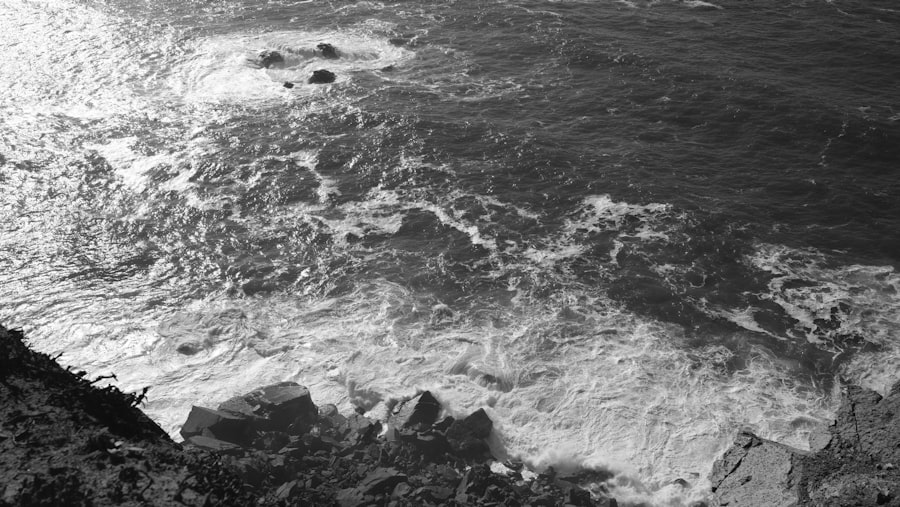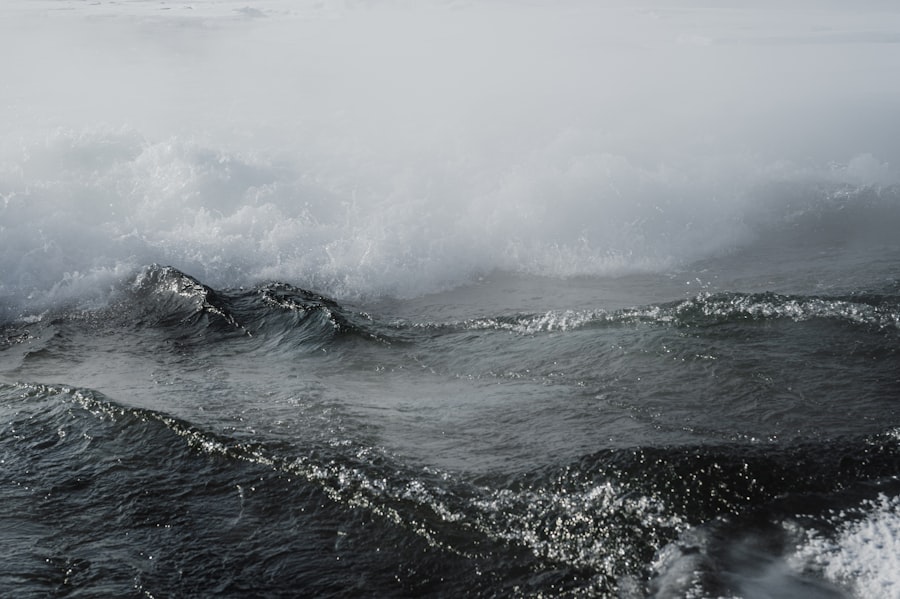The Drake Passage, a body of water located between the southern tip of South America and Antarctica, is notorious for its unpredictable weather patterns and fierce cyclonic activity. These cyclones, often referred to as “low-pressure systems,” can develop rapidly and lead to extreme weather conditions, including high winds and turbulent seas. The unique geography of the region, characterized by the convergence of the Atlantic and Pacific Oceans, creates an environment where cyclones can thrive.
The passage is not only a critical route for maritime traffic but also a significant area for scientific research and exploration. Understanding the dynamics of these cyclones is essential for anyone navigating the Drake Passage. The cyclones can vary in intensity, with some producing winds exceeding 60 knots and waves that can reach heights of 30 feet or more.
These conditions pose serious risks to vessels traversing the passage, making it imperative for sailors and navigators to be well-informed about the potential for cyclonic activity. The formation of these storms is influenced by various factors, including ocean temperatures, atmospheric pressure systems, and seasonal changes, all of which contribute to the complexity of weather forecasting in this region.
Key Takeaways
- Drake Passage cyclones are intense low-pressure systems that form in the Southern Ocean, creating hazardous conditions for navigation.
- Cyclones in the Drake Passage can impact navigation by causing strong winds, high waves, and poor visibility, posing significant risks to ships and vessels.
- Navigating through Drake Passage cyclones presents challenges such as unpredictable weather patterns, rough seas, and limited escape routes.
- Strategies for avoiding Drake Passage cyclones include careful route planning, monitoring weather forecasts, and utilizing advanced technology for navigation.
- Technology plays a crucial role in navigating Drake Passage cyclones, providing real-time weather updates, satellite communication, and advanced navigation systems for safer passage.
The Impact of Cyclones on Drake Passage Navigation
The impact of cyclones on navigation through the Drake Passage cannot be overstated. For mariners, encountering a cyclone can mean the difference between a safe passage and a perilous situation. The unpredictable nature of these storms often leads to sudden changes in weather conditions, which can catch even the most experienced sailors off guard.
As a result, many vessels are forced to alter their routes or delay their journeys to avoid the worst of the storm’s effects. Moreover, the consequences of navigating through a cyclone can extend beyond immediate safety concerns. Damage to vessels can be significant, leading to costly repairs and delays in schedules.
Additionally, the psychological toll on crew members who must contend with such extreme conditions can affect morale and performance. Therefore, understanding the potential impact of cyclones is crucial for effective planning and risk management in maritime operations within the Drake Passage.
Navigational Challenges Posed by Drake Passage Cyclones

Navigating through the Drake Passage during cyclonic conditions presents a myriad of challenges that require skillful seamanship and strategic planning. One of the primary challenges is the rapid onset of severe weather, which can develop with little warning. This unpredictability makes it difficult for navigators to prepare adequately, as they may not have sufficient time to adjust their course or take necessary precautions.
In addition to sudden weather changes, the physical characteristics of the Drake Passage itself complicate navigation during cyclones. The narrow strait is known for its strong currents and shifting tides, which can exacerbate the effects of high winds and rough seas. Vessels may find themselves battling not only the forces of nature but also the limitations imposed by their own design and capabilities.
This combination of factors necessitates a high level of expertise and adaptability from those who venture into these treacherous waters.
Strategies for Avoiding Drake Passage Cyclones
| Strategy | Description |
|---|---|
| Plan for the right season | Avoid traveling during the peak cyclone season from May to September. |
| Choose a reliable vessel | Select a sturdy ship with experienced crew to navigate through potential cyclones. |
| Stay informed | Keep updated on weather forecasts and communicate with the ship’s crew for any potential cyclone warnings. |
| Flexible itinerary | Have a flexible travel plan to allow for changes in route to avoid cyclones. |
To mitigate the risks associated with cyclones in the Drake Passage, mariners employ various strategies aimed at avoiding these dangerous weather systems. One effective approach is thorough pre-voyage planning that includes detailed weather assessments and route optimization. By analyzing historical weather patterns and current forecasts, navigators can identify periods when cyclonic activity is less likely and plan their journeys accordingly.
Another strategy involves maintaining flexibility in scheduling. Given the unpredictable nature of cyclones, it is often wise for vessels to allow for adjustments in their itineraries. This may mean delaying departure or altering course mid-voyage to steer clear of developing storms.
Additionally, mariners are encouraged to stay informed about real-time weather updates through satellite communications and onboard meteorological equipment, enabling them to make informed decisions as conditions change.
The Role of Technology in Navigating Drake Passage Cyclones
In recent years, advancements in technology have significantly enhanced navigational safety in the Drake Passage. Modern vessels are equipped with sophisticated radar systems, GPS technology, and real-time weather monitoring tools that provide critical information about approaching storms. These technologies allow navigators to track cyclonic activity more accurately and make timely decisions regarding course adjustments.
Furthermore, satellite communication has revolutionized how mariners receive weather updates. With access to up-to-date forecasts and satellite imagery, crews can better anticipate changes in weather patterns and respond proactively to emerging threats. This technological integration not only improves safety but also enhances overall efficiency in maritime operations within this challenging region.
Emergency Protocols for Dealing with Drake Passage Cyclones

Despite careful planning and advanced technology, emergencies can still arise when navigating through cyclones in the Drake Passage. Therefore, having well-defined emergency protocols is essential for ensuring crew safety and vessel integrity during such events. These protocols typically include clear communication procedures, designated roles for crew members, and specific actions to take in response to various scenarios.
For instance, if a cyclone is detected while at sea, crews are trained to assess their options quickly. This may involve securing loose equipment, reinforcing hatches, and preparing life-saving gear for potential emergencies. Additionally, vessels often establish communication with nearby ships or coastal authorities to report their status and receive guidance on navigating through or around the storm.
The Importance of Weather Forecasting in Drake Passage Navigation
Weather forecasting plays a pivotal role in safe navigation through the Drake Passage. Accurate forecasts enable mariners to anticipate cyclonic activity and make informed decisions about their routes. Meteorological services provide vital information regarding wind speeds, wave heights, and storm trajectories that are crucial for planning safe passages.
In recent years, improvements in forecasting models have enhanced the accuracy of predictions related to cyclones in this region. Advanced computer simulations and satellite data allow meteorologists to analyze atmospheric conditions more effectively, leading to better forecasts that can be relied upon by navigators. As a result, mariners are increasingly able to avoid dangerous weather patterns by utilizing these forecasts as part of their pre-voyage planning process.
Historical Incidents and Lessons Learned from Drake Passage Cyclones
The history of navigation through the Drake Passage is marked by numerous incidents involving cyclones that have provided valuable lessons for future mariners. One notable event occurred in 1998 when a powerful cyclone struck a fleet of vessels traversing the passage, resulting in significant damage and loss of life. This incident underscored the importance of timely weather updates and effective communication among ships operating in close proximity.
Such historical events have prompted maritime organizations to develop improved safety protocols and training programs focused on cyclone preparedness. By analyzing past incidents, navigators can better understand the risks associated with cyclonic activity and implement strategies to mitigate those risks effectively. These lessons learned continue to shape best practices for navigating through one of the world’s most challenging maritime environments.
The Influence of Drake Passage Cyclones on Expedition Planning
For expedition planners aiming to explore Antarctica or conduct research in its surrounding waters, understanding cyclonic activity in the Drake Passage is crucial. Cyclones can significantly impact timelines and logistics, making it essential for planners to account for potential delays or route changes due to adverse weather conditions. Moreover, expedition teams must consider the safety of their crew members when planning voyages through this region.
This includes evaluating vessel capabilities against expected weather conditions and ensuring that all necessary safety equipment is onboard. By incorporating knowledge about cyclones into expedition planning processes, teams can enhance their chances of successful missions while minimizing risks associated with navigating through turbulent waters.
The Future of Navigating Drake Passage Cyclones
As climate change continues to influence global weather patterns, the future of navigating through cyclones in the Drake Passage may evolve significantly. Researchers are increasingly focused on understanding how shifting climate conditions could affect cyclone frequency and intensity in this region. Such insights will be vital for mariners as they adapt their strategies for safe navigation.
Additionally, advancements in technology will likely play a crucial role in enhancing navigational safety in the face of changing weather patterns. Innovations such as artificial intelligence-driven forecasting models may provide even more accurate predictions regarding cyclone development and behavior. As these technologies continue to advance, they will empower mariners with better tools for navigating one of the most challenging maritime environments on Earth.
Tips for Safe and Successful Passage through the Drake Passage Cyclones
For those preparing to navigate through the Drake Passage during cyclone season, several tips can enhance safety and success. First and foremost, thorough preparation is key; this includes studying weather patterns, understanding vessel capabilities, and ensuring all safety equipment is functional before departure. Additionally, maintaining open lines of communication with other vessels and maritime authorities can provide valuable insights into current conditions and potential hazards ahead.
By following these guidelines and remaining vigilant about changing conditions, mariners can increase their chances of safely traversing one of the world’s most formidable maritime passages while minimizing risks associated with cyclones in the Drake Passage.
The Drake Passage is a notorious stretch of water known for its turbulent weather and powerful cyclones, which can make navigation challenging for vessels. An interesting article that delves into the dynamics of these cyclones and their impact on maritime travel can be found on MyGeoQuest. This article provides insights into the meteorological phenomena that contribute to the formation of cyclones in this region and discusses the implications for shipping routes. For more detailed information, you can read the full article by visiting MyGeoQuest’s sample page.
WATCH NOW! Drake Passage: Earth’s Deadliest Waters Revealed
FAQs
What are Drake Passage cyclones?
Drake Passage cyclones are intense low-pressure systems that form in the Drake Passage, the body of water between South America’s Cape Horn and the South Shetland Islands of Antarctica. These cyclones are known for their strong winds and rough seas.
How do Drake Passage cyclones form?
Drake Passage cyclones form when cold air from Antarctica meets warm air from the north, creating a strong temperature gradient. This temperature difference, combined with the Coriolis effect, leads to the development of intense low-pressure systems.
What are the characteristics of Drake Passage cyclones?
Drake Passage cyclones are characterized by strong winds, often reaching hurricane force, and rough seas. These cyclones can bring heavy precipitation and are known for their rapid and unpredictable changes in intensity.
What are the impacts of Drake Passage cyclones?
Drake Passage cyclones can have significant impacts on maritime activities in the region, including shipping and research expeditions. The strong winds and rough seas associated with these cyclones can pose a danger to vessels, making navigation challenging.
How are Drake Passage cyclones monitored and studied?
Drake Passage cyclones are monitored and studied using satellite imagery, weather buoys, and research vessels. Scientists and meteorologists use these tools to track the development and movement of cyclones in the region, as well as to better understand their formation and behavior.
